Curious about how our bodies have the incredible ability to repair and regenerate damaged tissue?
Our bodies have stem cells that have the unique ability to develop into various types of specialized cells in the body. They can regenerate and repair damaged tissues, contribute to organ growth and development, and help maintain the body’s overall health and function.
Stem cell therapy uses these novel qualities of stem cells.
How does stem cell therapy work?
It uses your stem cells to treat injuries instead of transplanted organs.
By using stem cells you can heal and restore health. To know more, let’s deep dive and understand stem cell therapy and its potential to revolutionize medicine as we know it.
Stem Cell Therapy for Diabetes
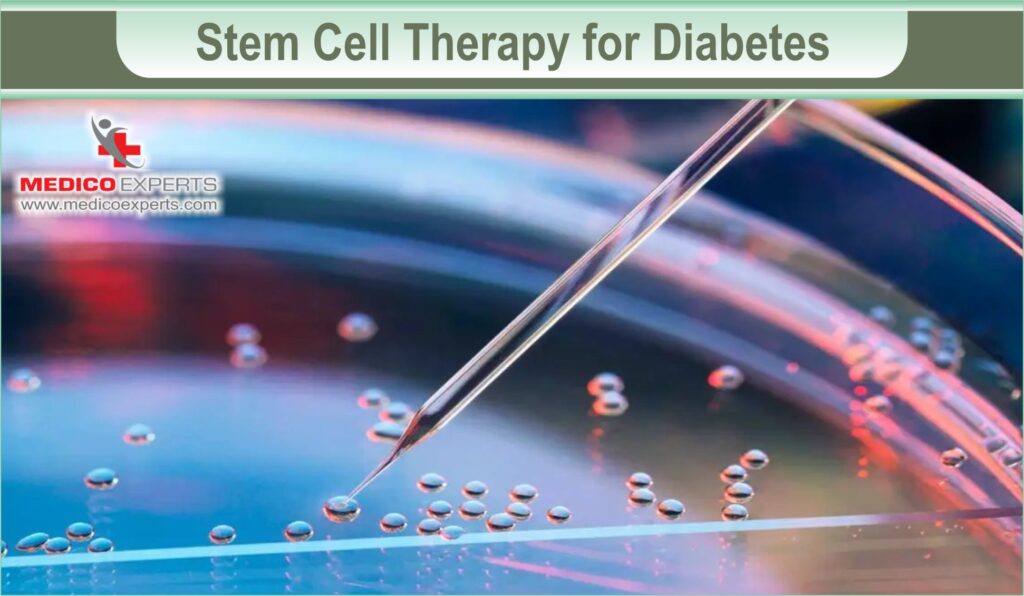
Stem cell therapy offers hope for treating diabetes, especially type 1 diabetes (T1D). T1D is a long-term condition where cells that make insulin in the pancreas are destroyed. Currently, the main treatment involves giving insulin externally, but it doesn’t cure the disease.
Stem cell therapy, also called regenerative medicine, aims to repair damaged tissue using stem cells. Stem cells are basic cells that can develop into different specialized cells. In diabetes, stem cell therapy aims to replace or repair the insulin-producing cells that are lost in T1D.
Types of stem cells used in diabetes treatment
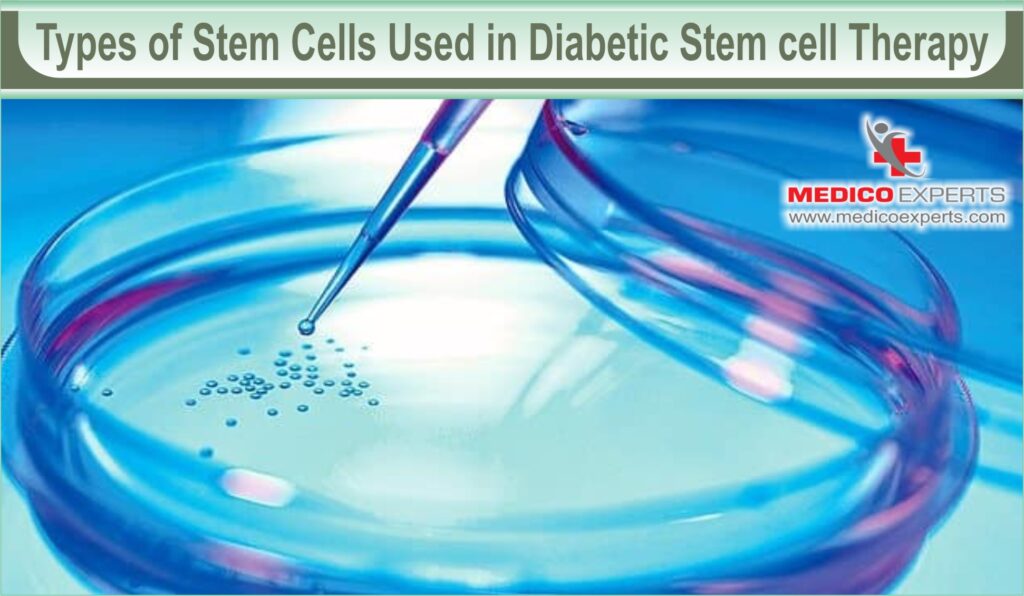
Researchers have explored various types of stem cells for diabetes treatment, including:
Induced Pluripotent Stem Cells (iPSCs)
iPSCs are adult cells that have been reprogrammed to a pluripotent state, meaning they can differentiate into different cell types. iPSCs offer the advantage of being patient-specific, reducing the risk of immune rejection. However, more research is needed to optimize their use for diabetes treatment.
Mesenchymal Stem Cells (MSCs)
MSCs are adult stem cells found in various tissues, such as bone marrow and adipose tissue. They have shown promise in diabetes treatment, with some studies reporting that transplanted MSCs can differentiate into insulin-producing cells and improve blood sugar control.
How does stem cell therapy work for diabetes?
The exact mechanism by which stem cell therapy works for diabetes is still being studied. However, the general idea is that transplanted stem cells can differentiate into insulin-producing cells and integrate into the existing pancreatic tissue. These newly generated insulin-producing cells can then regulate blood sugar levels, potentially reducing or eliminating the need for external insulin administration.
Stem Cell Therapy for Knee Pain
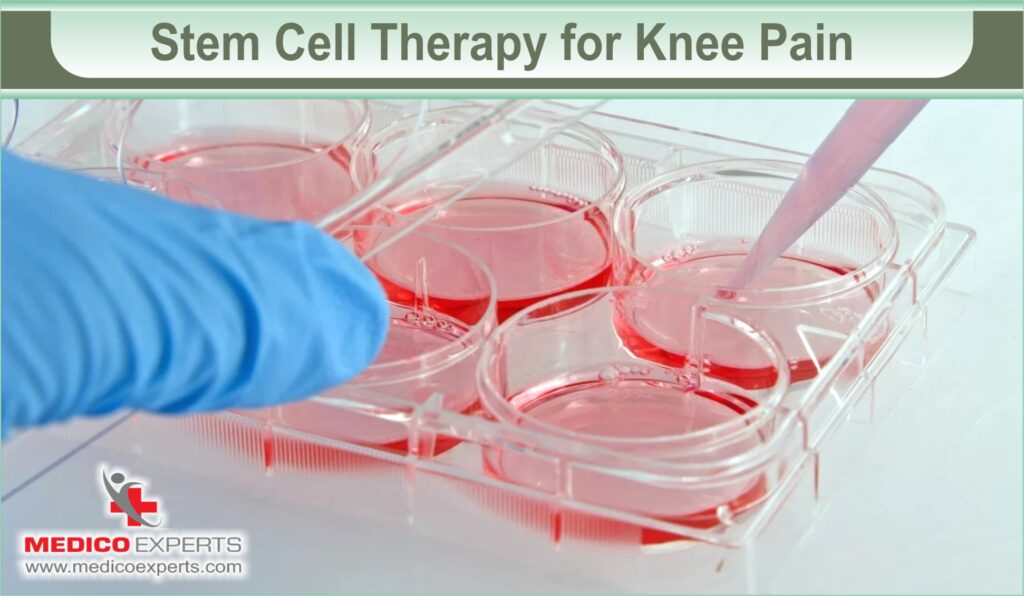
Stem cell therapy is a possible treatment for knee pain and different knee issues. Although research is ongoing, how stem cell therapy works for knee pain and its effectiveness are still being investigated. Here’s a summary of how it might function:
Stem cells used in this therapy can come from different places like blood, bone marrow, and fat tissue. These stem cells are related to the cells that make up our joints, muscles, bones, ligaments, and cartilage.
Types of stem cells used in knee pain treatment
The most effective stem cells for knee pain and improving knee function come from either umbilical cord tissue or a person’s fat cells.
A review of 16 studies, involving 875 patients with knee osteoarthritis, shows that stem cell therapy can significantly reduce knee pain starting from three months after treatment. These studies included 336 men and participants aged between 51 and 69 years. Of the total, 441 people received stem cells, while 436 served as controls. This highlights the potential of stem cell therapy for knee osteoarthritis.
How does stem cell therapy help with knee pain?
When stem cells are applied to an arthritic joint, researchers suggest that the following processes may occur:
- Stem cells may differentiate into new cartilage cells, which are needed in the joint.
- Stem cells may help suppress inflammation.
- Stem cells may release proteins called cytokines, which can slow down the degeneration of cartilage and decrease pain.
Stem Cell Therapy for Parkinson’s Disease
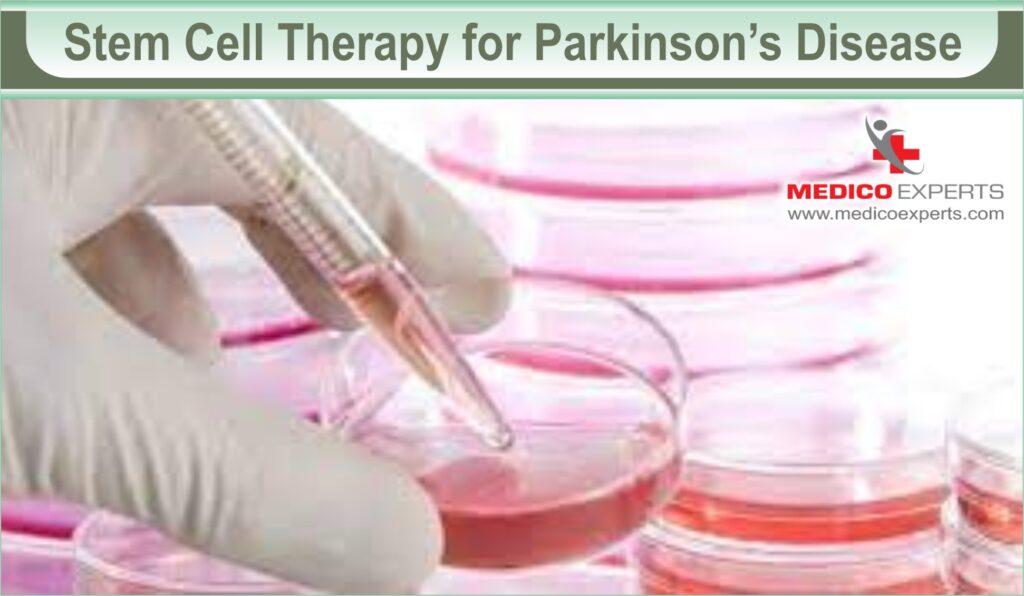
Parkinson’s disease is a condition where special brain cells, called dopaminergic neurons, are lost. These neurons help control dopamine, which is important for movement, thinking, and mood. Stem cell therapy tries to replace these lost neurons.
Types of Stem cells used in Parkinson’s treatment
Researchers have looked at different types of stem cells for treating PD, but the most hopeful ones are embryonic stem cells (ESCs) and induced pluripotent stem cells (iPSCs).
How does stem cell therapy help in Parkinson’s Disease?
For the past four decades, there has been much interest in the development of cell-based regenerative therapies, designed to treat the dopaminergic deficits of PD physiologically. However, while several cell sources had initially seemed promising, ethical, logistical, and scientific barriers have meant that progress has been slow and iterative.
Taking into account historical experiences with other cell sources, stem cell-based treatments have emerged as the most promising means of offering an effective regenerative therapy that could feasibly be scaled for the treatment of large numbers of patients.
Stem cell therapy for Parkinson’s disease is still in the early stages of clinical testing. Many trials are either proposed, currently recruiting, or already active. The results of these clinical trials will determine how soon stem cell therapy might become widely available as a treatment for Parkinson’s disease.
Stem Cell Therapy for Autism
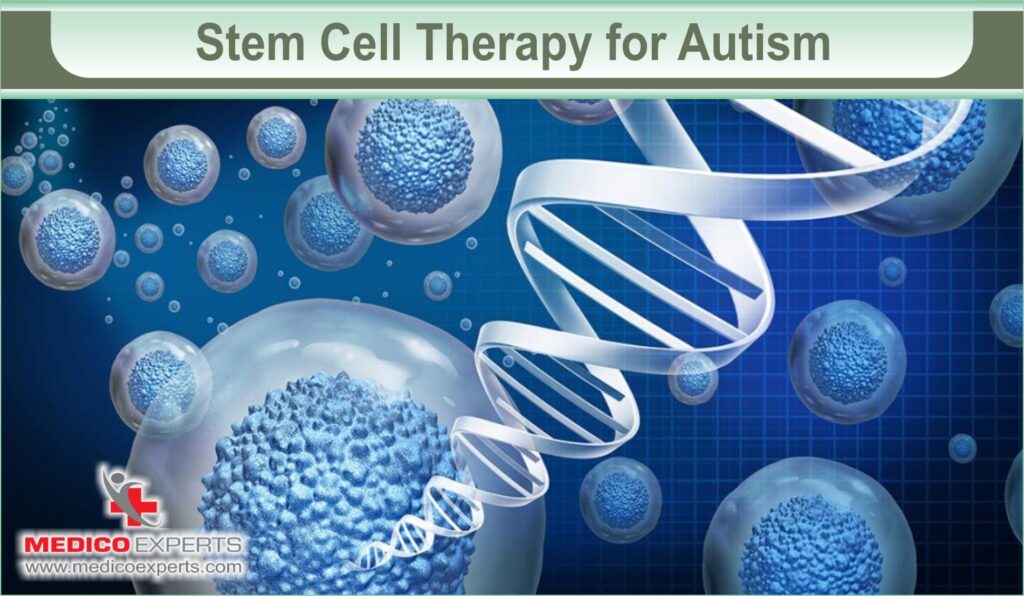
Stem cell therapy for autism is an ongoing area of research and is considered experimental by the medical community. While there is ongoing research, the exact mechanism of action and effectiveness of stem cell therapy for autism are still being studied.
Stem cell therapy for autism is still in the early stages of research and clinical testing. It is important to note that there is currently no clear scientific evidence supporting the use of stem cell therapy for changing the characteristics of autism.
While some studies have reported positive outcomes, more research is needed to determine the safety, effectiveness, optimal treatment protocols, and long-term effects of stem cell therapy for autism.
Stem cell therapy for autism is still in the early stages of research and clinical testing. It is important to note that there is currently no clear scientific evidence supporting the use of stem cell therapy for changing the characteristics of autism.
While some studies have reported positive outcomes, more research is needed to determine the safety, effectiveness, optimal treatment protocols, and long-term effects of stem cell therapy for autism.
Types of stem cells used in autism treatment
There are different types of stem cells that have been used for autism treatment, including
Adult Stem Cells
Adult stem cells can be obtained from the patient’s own hip bone or adipose tissue (fat). These stem cells are considered safe and are the most commonly used type in stem cell therapy for autism. They can be extracted, separated, and injected back into the patient relatively easily and non-invasively.
Induced Pluripotent Stem Cells (iPSCs)
iPSCs are a type of stem cell that can be generated from the patient’s own cells and are genetically modified to behave like embryonic stem cells. iPSCs combine the potential effectiveness of embryonic stem cells with the safety of adult stem cells.
How does stem cell therapy work for autism?
Stem cells are believed to repair, regenerate, and replace damaged cells in the brain. For more detailed information do visit the stem cell treatment for autism page by clicking the button below.
Conclusion
Stem cell therapy has emerged as a groundbreaking approach for treating various diseases. Stem cell therapy offers hope for patients with chronic degenerative diseases, with a high success rate. It has the potential to revolutionize medicine by providing a cost-effective alternative to expensive drug treatments.
Stem cell therapy has shown promise in treating diseased conditions in the fields of neurology, orthopedics, and internal medicine.
Stem cell therapies hold great promise in the treatment of genetic diseases too.
In conclusion, stem cell therapy is a game-changer in medicine, offering hope and potential solutions for diseases that were previously considered incurable. With ongoing advancements and research, stem cell therapy continues to evolve and offer hope for the future of healthcare.
FAQ :
Q1. Is stem cell injection painful?
Stem cell therapy and injection are not painful, but you can have a minor inflammation at the injection site.
Q2. What is the process of stem cell therapy?
The main process of stem cell therapy is the regeneration of damaged cells and that is why it is also known as regenerative medicine.
Q3. How stem cells are effective for therapy?
Stem cell therapy is a non-invasive treatment without any side effects. New cells are formed and they get integrated at the site of degeneration, causing great symptomatic relief to the patient.
References
https://www.ncbi.nlm.nih.gov/pmc/articles/PMC8178013/
https://onlinelibrary.wiley.com/doi/abs/10.1002/jor.25724
https://www.ncbi.nlm.nih.gov/books/NBK536728/
https://academic.oup.com/stcltm/article/6/5/1332/6404745



